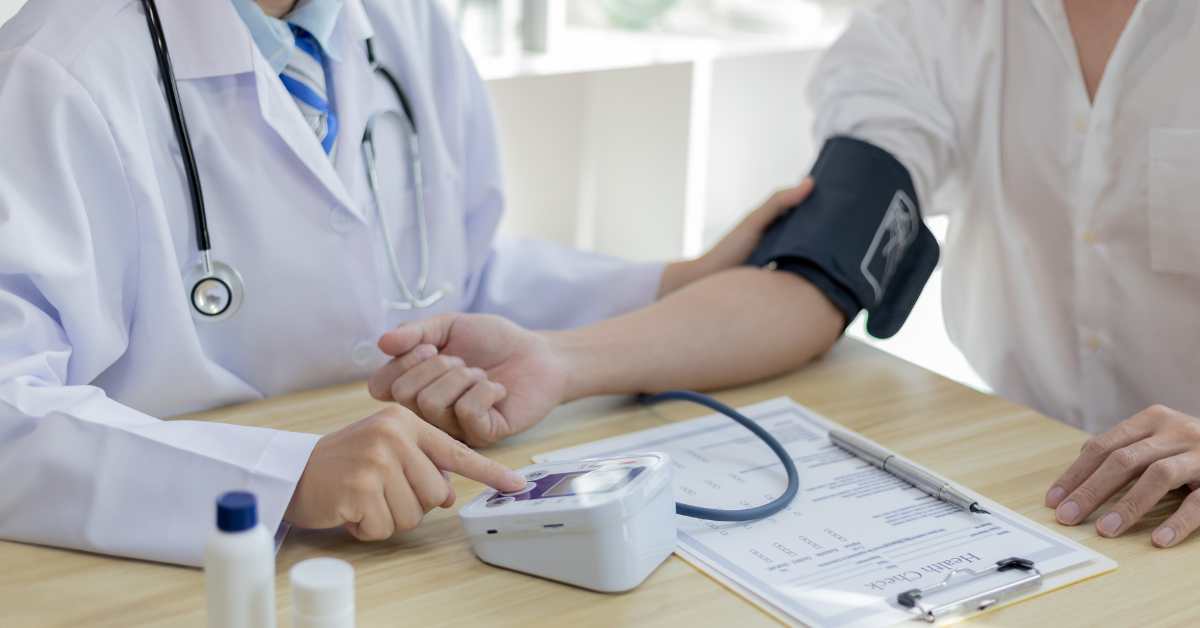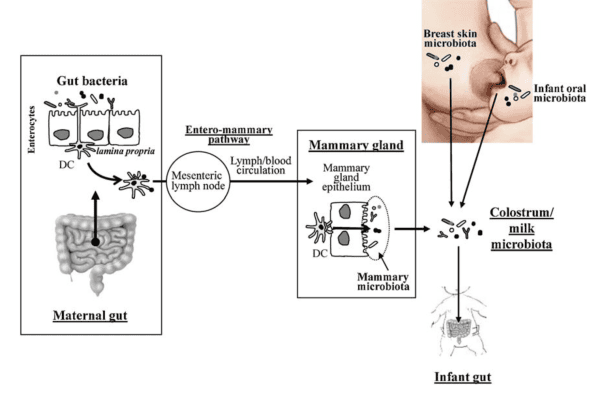Antiseptic nasal drops and mouth rinses can be used for the treatment and prevention of upper respiratory tract infections including colds, flus, RSV, and COVID-19.
These aren’t always easy to find, so I’ve rounded up some links to commercially available antiseptic mouth rinses and nasal sprays PLUS instructions for how to dilute widely available 10% providone iodine to make a DIY Nasal Spray or Antiseptic Mouth Rinse.
These treatments aren’t without side effects; so, I cover those as well as alternative choices.
Commercially Available Antiseptic Mouth Rinses
 Mouth rinses with cetylpiridinum chloride
Mouth rinses with cetylpiridinum chloride
Cetylpiridinum chloride side effects: these mouth rinses often have a high percentage of alcohol that can lead to dry mucous membranes in the mouth.
Brands include: Crest Pro-Health, Scope, Cepacol, Colgate Plax, Act Advanced Care, KForce Balance, Breath Rx, Perio-Aid, Halita.
Mouth rinses with chlorhexidine
These are usually only available with a prescription. Chlorhexidine side effects: staining of teeth and tongue, altered sense of taste, and increased tartar formation. These mouth rinses often have a high percentage of alcohol which can lead to dry mucous membranes in the mouth.
Brands include: Peridex, Perioguard, Paroex, Perio-Aid, Halita.
1% Iodine solution
To make a 1% iodine solution from the widely available 10% iodine solution, you simply dilute it by a factor of 10. That means, if you are putting your mouth rinse in a 250 mL bottle, you add 25 mL of 10% iodine and then fill it the rest of the way with sterile water (you can purchase sterile water from the drugstore or boil/cool tap water). See section below for side effects.
Listerine with essential oils
Side effects: These mouth rinses often have a high percentage of alcohol which can lead to dry mucous membranes in the mouth.
Commercially Available Antiseptic Nasal Sprays
1% Iodine nasal spray
To make a 1% iodine solution from the widely available 10% iodine solution, you simply dilute it by a factor of 10. That means, if you are putting your nasal spray in a 30 mL bottle, you add 3 mL of 10% iodine and then fill it the rest of the way with sterile water (you can purchase sterile water from the drugstore or boil/cool tap water).
Brand: Viraldine
Xylitol nasal spray
Xylitol nasal sprays are antibacterial, antiviral, and moisturizing. Xylitol nasal sprays haven’t been evaluated as COVID-19 treatments, but preliminary evidence shows that xylitol may be effective against the virus.
Brand: Xlear
Saline Nasal Rinse
Saline nasal rinses are a mainstay of naturopathic prevention and treatment for upper respiratory infections. Because of its efficacy with other upper respiratory tract infections, researchers have theorized that this could be an effective tool to add to your treatment or prevention regime and a small study using saline nasal rinse for COVID-19 showed promising results. To create a DIY saline solution, add ½ tsp salt and ½ tsp of baking soda to 1 cup of warm sterile water.
Brand: Neti Pot, Hydrasense, NeilMed
Safety Considerations For Iodine Solutions
Iodine isn’t advised for anyone with an iodine allergy or those undergoing radioiodine treatment.
Iodine is often a part of an integrative thyroid treatment plan and has the potential to be very healing. In some people, however, iodine can disrupt thyroid function. Your doctor can help you decide if iodine is a good choice for you. Concentrations of 5% and 10% iodine solution should not be used and have been found to be harmful. Frontline Doctors recommend using iodine treatments for 5 days maximum if pregnant.
Safety Considerations For Children
It’s my opinion that iodine solutions should be avoided in children unless advised by your doctor. Using a xylitol nasal spray or saline nasal rinse instead will help with congestion and discomfort and may help fight the virus as well.
It’s important that children who may potentially swallow mouth rinses not be given mouth rinses.
Conclusions
Antiseptic mouth rinses and nasal sprays are in most cases a safe addition to prevention and treatment plans for upper respiratory tract infections, however there are some side effects to be aware of. Harsher treatments aren’t always better, and even something as simple as a saline nasal spray can be beneficial in treating and preventing COVID-19.
References
Aditi Chopra, Karthik Sivaraman, Raghu Radhakrishnan, Dhanasekar Balakrishnan, Aparna Narayana. Can povidone iodine gargle/mouthrinse inactivate SARS-CoV-2 and decrease the risk of nosocomial and community transmission during the COVID-19 pandemic? An evidence-based update. Japanese Dental Science Review. Volume 57. 2021. Pages 39-45. ISSN 1882-7616. https://doi.org/10.1016/j.jdsr.2021.03.001.
The unexpected side-benefits of iodine-based mouthwash – CNE Dental Blog
Could a cheap iodine mouthwash really help to beat Covid?
Guenezan J, Garcia M, Strasters D, et al. Povidone Iodine Mouthwash, Gargle, and Nasal Spray to Reduce Nasopharyngeal Viral Load in Patients With COVID-19: A Randomized Clinical Trial. JAMA Otolaryngol Head Neck Surg. 2021;147(4):400–401. doi:10.1001/jamaoto.2020.5490
Doctors Warn Against Betadine in Nasal Spray, Mouthwash to Prevent COVID-19 | Health.com .
I-MASK+ Protocol – FLCCC | Front Line COVID-19 Critical Care Alliance
Cetylpyridinium chloride – American Chemical Society
https://journals.asm.org/doi/10.1128/AAC.00576-20
6 effective mouthwash ingredients / Brands that contain them.
https://journals.sagepub.com/doi/10.1177/0145561320932318
Frank, S., Capriotti, J., Brown, S. M., & Tessema, B. (2020). Povidone-Iodine Use in Sinonasal and Oral Cavities: A Review of Safety in the COVID-19 Era. Ear, Nose & Throat Journal, 99(9), 586–593.
Xu, C., Wang, A., Hoskin, E. R., Cugini, C., Markowitz, K., Chang, T. L., & Fine, D. H. (2020). Differential effects of antiseptic mouth rinses on SARS-CoV-2 infectivity in vitro. bioRxiv : the preprint server for biology, 2020.12.01.405662.
Naqvi, S.H.S., Citardi, M.J., Cattano, D. et al. Povidone-iodine solution as SARS-CoV-2 prophylaxis for procedures of the upper aerodigestive tract a theoretical framework. J of Otolaryngol – Head & Neck Surg 49, 77 (2020).
Bansal, S., Jonsson, C. B., Taylor, S. L., Figueroa, J. M., Dugour, A. V., Palacios, C., & Vega, J. C. (2021). Iota-carrageenan and xylitol inhibit SARS-CoV-2 in Vero cell culture. PloS one, 16(11), e0259943.
Panta, P., Chatti, K., & Andhavarapu, A. (2021). Do saline water gargling and nasal irrigation confer protection against COVID-19?. Explore (New York, N.Y.), 17(2), 127–129.
Ramalingam, S., Graham, C., Dove, J., Morrice, L., & Sheikh, A. (2020). Hypertonic saline nasal irrigation and gargling should be considered as a treatment option for COVID-19. Journal of global health, 10(1), 010332.
Huijghebaert, S., Hoste, L., & Vanham, G. (2021). Essentials in saline pharmacology for nasal or respiratory hygiene in times of COVID-19. European journal of clinical pharmacology, 77(9), 1275–1293.
Salli, K., Lehtinen, M. J., Tiihonen, K., & Ouwehand, A. C. (2019). Xylitol’s Health Benefits beyond Dental Health: A Comprehensive Review. Nutrients, 11(8), 1813.
Pilicheva, B., & Boyuklieva, R. (2021). Can the Nasal Cavity Help Tackle COVID-19?. Pharmaceutics, 13(10), 1612.
Huijghebaert, S., Hoste, L., & Vanham, G. (2021). Essentials in saline pharmacology for nasal or respiratory hygiene in times of COVID-19. European journal of clinical pharmacology, 77(9), 1275–1293.
Stathis, C., Victoria, N., Loomis, K., Nguyen, S. A., Eggers, M., Septimus, E., & Safdar, N. (2021). Review of the use of nasal and oral antiseptics during a global pandemic. Future microbiology, 16(2), 119–130.


